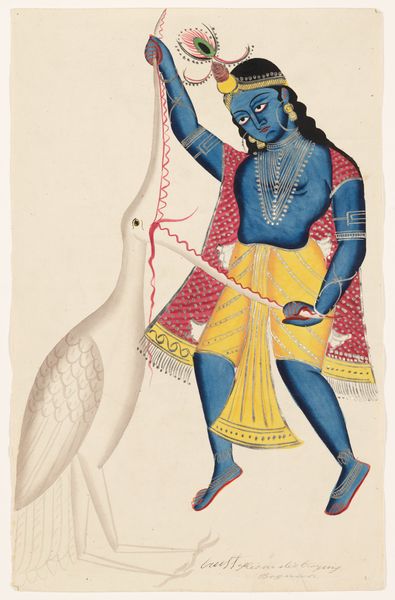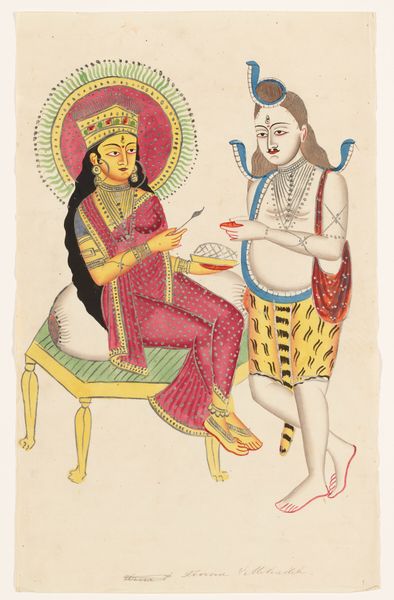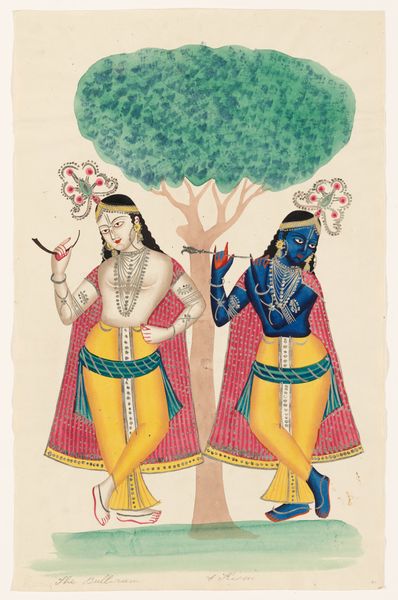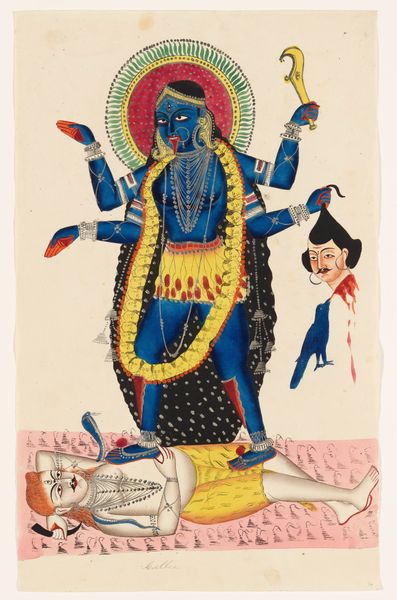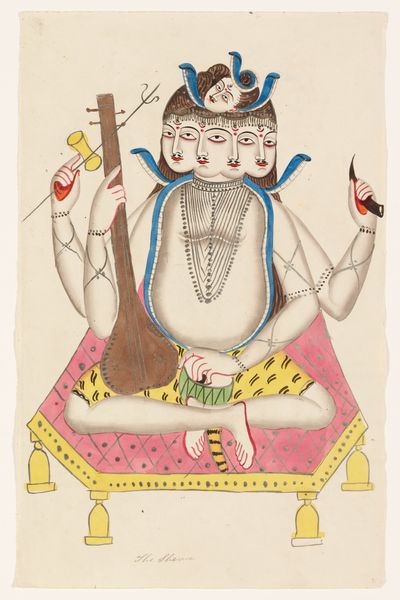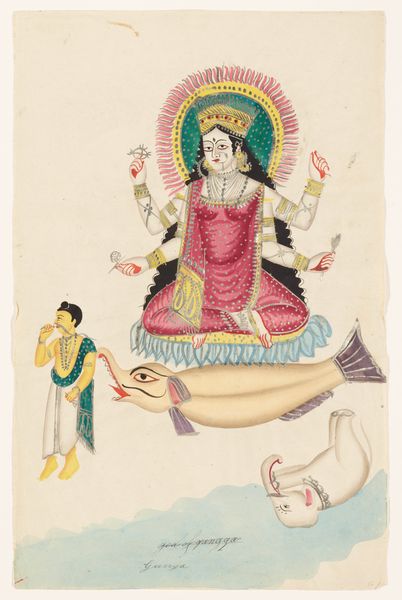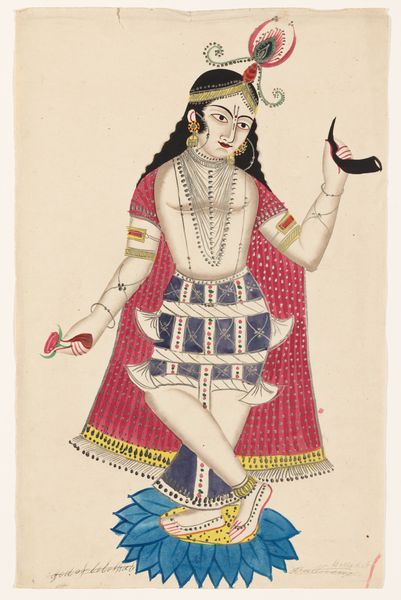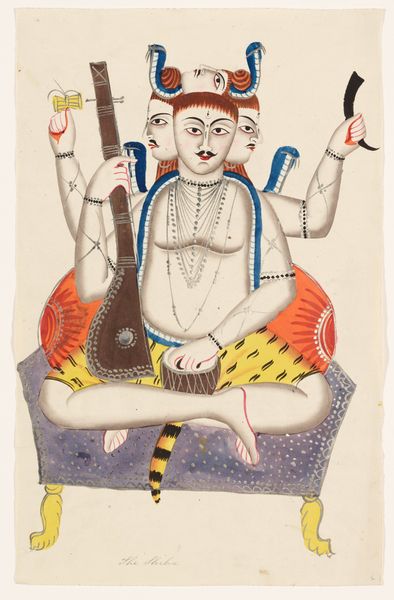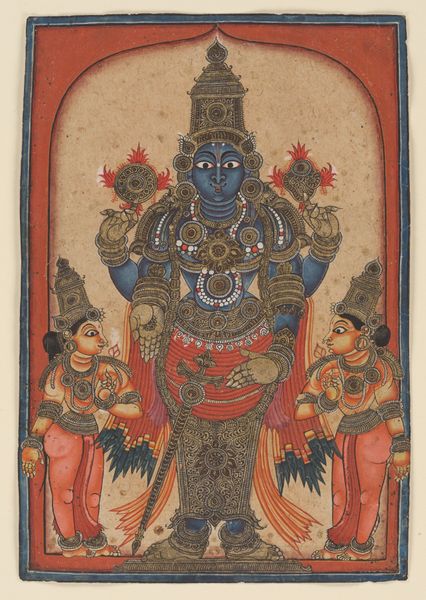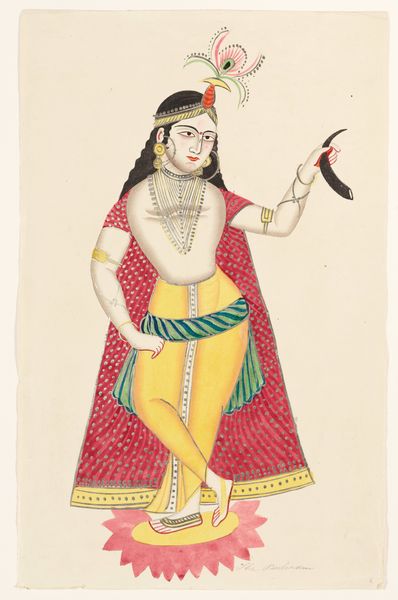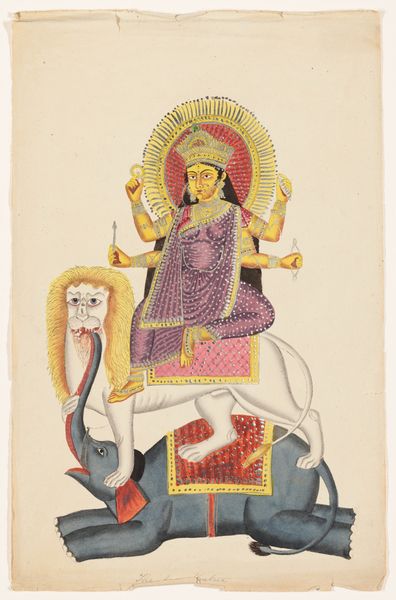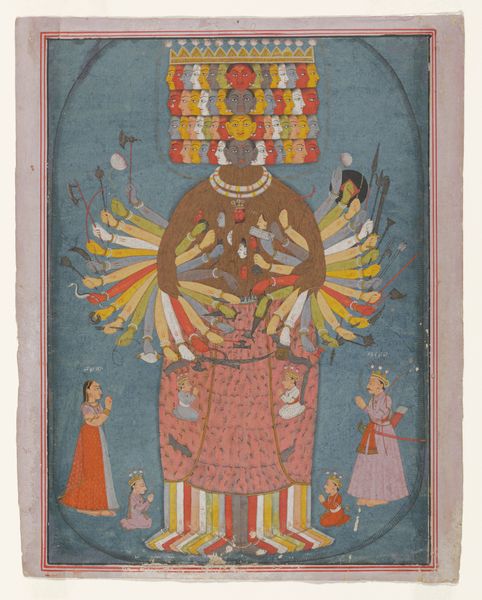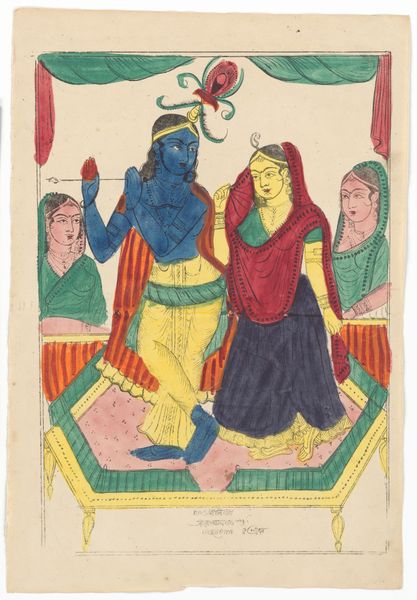
tempera, painting
#
quirky illustration
#
childish illustration
#
cartoon like
#
cartoon based
#
narrative-art
#
tempera
#
painting
#
asian-art
#
caricature
#
cartoon sketch
#
figuration
#
flat colour
#
cartoon style
#
cartoon carciture
#
cartoon theme
Dimensions: 17 13/16 x 11 1/4 in. (45.2 x 28.5 cm)
Copyright: Public Domain
Curator: We’re looking at “Vishnu as Vamana defeating King Mahabali,” a tempera painting that dates to the 19th century. Editor: The first thing that strikes me is the flatness of the color, that vibrant blue skin against the limited palette of reds, yellows, and whites. It's almost graphic in its simplicity. Curator: Indeed, that vibrant blue represents Vishnu. It connects to ideas of the infinite and the sky, a deliberate choice to portray his divine status. We have to remember the narrative context here: this image depicts Vishnu’s incarnation as Vamana, a dwarf, tricking King Mahabali, who was known for his generosity and power. The story is about power dynamics and divine intervention in social order. Editor: Yes, and look at the compositional structure; the dominant, imposing figure of Vishnu-as-Vamana towering over the kneeling King. The size discrepancy reinforces the power imbalance that is so key to understanding the piece. How else does the artist visually signal these thematic ideas? Curator: Notice Vamana's raised foot. By placing his foot on Mahabali's head, Vamana is literally subduing the king, pushing him down to the underworld, a visual representation of divine authority quelling worldly power. There are deep seated commentaries here on justice, dharma and caste hierarchies. Editor: I find the almost cartoon-like quality somewhat arresting. The simple outlines, the limited use of shading, the somewhat whimsical rendering of Vamana's multiple arms…it almost subverts the grand narrative you've outlined. Curator: I agree. It doesn’t negate it, but instead perhaps hints at the complexities of power—how even the most serious religious narratives can be interpreted and re-presented in ways that question the absolute nature of that power. This kind of devotional imagery wasn’t simply passive; it was engaged, and often critical. Editor: On closer inspection, the craftsmanship with the medium is wonderful. And regardless of my initial cartoonish remark, this is more intricate than appears at first glance. The choice of flat color planes is definitely very visually striking, a unique aesthetic choice here. Curator: Yes. It is in contemplating exactly such nuances of devotional narrative that one may find fresh understanding and greater resonance within its cultural heritage.
Comments
No comments
Be the first to comment and join the conversation on the ultimate creative platform.
